1. Lake Lanier, Georgia
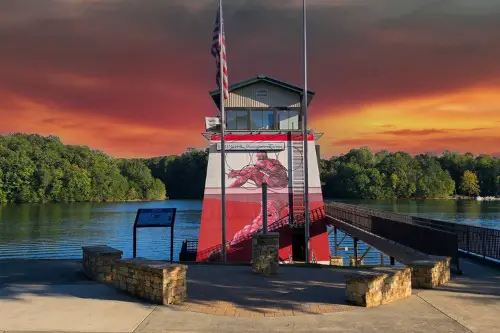
Lake Lanier may be popular with locals, but its reputation has gotten… spooky, according to Sarah Rand from Travel Noire. Created in the 1950s by flooding entire towns, it literally has submerged buildings and graves under its surface. Over the years, it’s earned a reputation for being haunted due to a high number of drownings and boating accidents. People swim here, but many do so with serious hesitation.
There’s also the issue of poor visibility and submerged debris, which can trap swimmers. Some have reported feeling sudden drops in water temperature or being tugged by unseen forces. Whether it’s urban legend or just bad luck, Lake Lanier has a definite “nope” energy for many would-be swimmers. Beautiful? Absolutely. Inviting? Not really.
2. Mono Lake, California
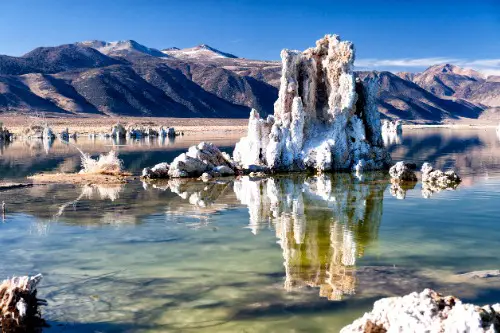
At first glance, Mono Lake looks like something out of a dream, with its surreal limestone tufa towers jutting out of the water. The landscape is stark and mesmerizing, framed by the Eastern Sierra Nevada mountains. But once you get up close, you’ll notice the water is thick with salt and teeming with alkali flies. The salinity is so high that fish can’t survive—only brine shrimp and the aforementioned flies thrive here.
Because of its extreme alkalinity and salinity, Mono Lake isn’t your typical place for a refreshing dip, according to Kristin Conard from Islands. The water can leave your skin feeling slimy and irritated, and that’s if you don’t mind swimming through bugs. Plus, the ecological sensitivity of the lake makes it a place where conservation is prioritized over recreation. You’ll see a lot of photographers and bird watchers, but almost no swimmers.
3. Lake Mead, Nevada/Arizona

This massive reservoir behind the Hoover Dam has stunning desert views and crystal blue water in certain coves. It’s a popular boating and fishing spot, but actual swimming? Not so much. Dangerous currents and fluctuating water levels make it risky, according to Leslie Veliz from Islands.
Over the years, Lake Mead has claimed hundreds of lives, often because swimmers underestimate its depth and sudden drop-offs. Drought has also exposed more debris and submerged hazards. In recent years, falling water levels have even revealed human remains, adding an eerie undertone. The beauty is undeniable, but many prefer to admire it from a safe distance.
4. Lake Michigan, Illinois/Wisconsin/Michigan/Indiana

It’s hard to ignore the allure of Lake Michigan’s shoreline—those sandy beaches, that endless horizon. On calm days, it can look like a Caribbean paradise. But the water hides powerful rip currents, especially near Chicago and other populated areas. These currents are stronger and deadlier than most people realize, according to Vaani Sai from Outdoor Guide.
Drownings are tragically common in this Great Lake, even among experienced swimmers. Local officials frequently post warnings, but tourists don’t always take them seriously. Add to that the shockingly cold water temps, even in summer, and it becomes clear why some opt to stay on the sand. It’s beautiful, but it’s not to be taken lightly.
5. Crater Lake, Oregon

Crater Lake is breathtaking with its deep sapphire color and perfect symmetry. It’s the deepest lake in the U.S., formed inside the collapsed caldera of a volcano. People come from all over the world just to gaze at it—and most of them keep their distance from the water. There’s only one legal access point for swimming, and even then, few dare to jump in.
The water is glacially cold, even in the middle of summer, according to Sam Hill from SF GATE. Its steep, cliff-lined shores make it difficult and dangerous to climb in and out. Plus, the sheer depth adds a psychological barrier—it’s like diving into a liquid abyss. Visitors often say it’s too pretty to disturb.
6. Lake Pontchartrain, Louisiana
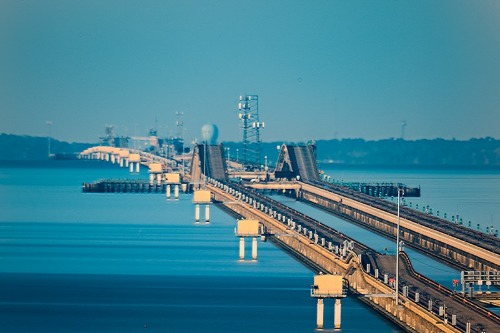
Sprawling just outside New Orleans, Lake Pontchartrain looks serene and endless. It’s actually an estuary, not a true lake, and its brackish water isn’t known for being especially clean. Industrial pollution and runoff have long plagued the water quality, although it’s improving. Still, the stigma remains.
Then there’s the risk of Vibrio vulnificus, a flesh-eating bacteria that thrives in warm brackish waters. People with open cuts or compromised immune systems are especially at risk. Add in a few sightings of bull sharks over the years, and most folks decide to skip the swim. Better to enjoy the lake from a pier or boat.
7. Salton Sea, California
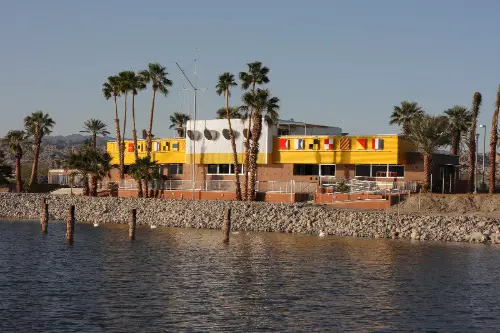
This eerie lake in Southern California has a fascinating backstory—it was accidentally created in 1905 when the Colorado River breached a canal. At first, it was a glamorous vacation spot, but over time, increasing salinity and pollution turned it toxic. The air around it often reeks of dead fish and sulfur. It looks like a mirage in the desert, but it’s far from swimmable.
The fish die-offs are a direct result of the lake’s super-salty, oxygen-depleted water. Swimming here isn’t just gross—it can actually be hazardous to your health. Skin irritation and respiratory issues from nearby dust storms are common complaints. Today, it’s more of a post-apocalyptic photo op than a beach day destination.
8. Lake Erie, Ohio/Pennsylvania/New York/Michigan
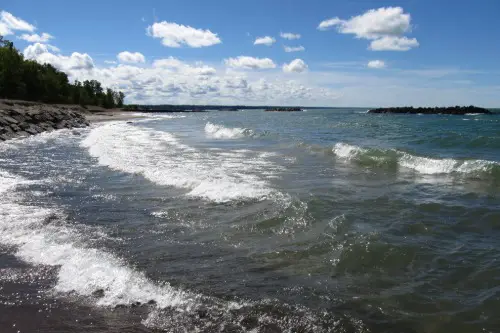
Lake Erie is the shallowest of the Great Lakes, which means it warms up quickly in the summer. But warmer water also means more algae blooms—particularly toxic blue-green algae. These blooms can cause rashes, respiratory issues, and gastrointestinal distress. Some summers, entire stretches of the shoreline are shut down to swimmers.
The issue has gotten worse with agricultural runoff, especially near Ohio. The water can look deceptively clean on the surface, hiding toxins below. Health advisories are often issued, but visitors don’t always check. Between the pollution and unpredictability, it’s a lake better suited for sailing than splashing.
9. Jacob Lake, Arizona

Tucked away near the North Rim of the Grand Canyon, Jacob Lake is more of a pond, really—but a scenic one surrounded by forest. It’s a lovely spot for a picnic or a quick hike, but not for swimming. Why? Because it’s shallow, stagnant, and full of sediment.
Wildlife uses it as a water source, so it’s not exactly pristine. The murky water and lack of current make it a breeding ground for bacteria. While it looks quaint in photos, up close it’s not all that inviting. Locals will tell you it’s more for looking than leaping.
10. Lake Champlain, Vermont/New York

Lake Champlain is stunning, stretching between the Adirondacks and the Green Mountains, with picturesque towns dotting the shoreline. It’s a favorite for kayakers, sailors, and photographers who love a good sunrise over calm waters. But when it comes to swimming, many locals and visitors think twice. The lake often suffers from harmful blue-green algae blooms, especially in late summer.
These blooms can make the water toxic for humans and pets, with warnings posted at beaches and public access points. The situation has worsened in recent years due to climate change and agricultural runoff. On top of that, the lake is massive and deep, with unpredictable weather patterns that can change quickly. It’s beautiful, no doubt, but not always safe to dive into.
11. Lake Allatoona, Georgia
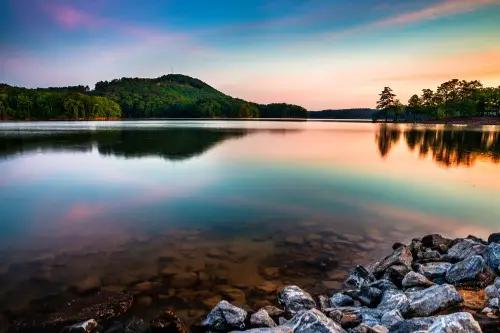
This lake is postcard-perfect, surrounded by green hills and dotted with boats. But below the surface, Lake Allatoona has its dangers. Sudden drop-offs, unpredictable currents, and underwater obstacles make swimming risky, especially for beginners. It’s another lake with a troubling number of drowning incidents.
Some of the most dangerous areas are near the dam and inlets, where people don’t realize how quickly conditions can change. Locals often advise sticking to designated beaches—if you swim at all. Even strong swimmers have been caught off guard. It’s a beautiful escape, but not one to take lightly.
12. Lake Powell, Utah/Arizona

Lake Powell’s dramatic red rock canyons and bright blue water are Instagram gold. But under that scenic surface lies a labyrinth of narrow channels and steep drops. Boating is huge here, but swimming can be surprisingly dangerous. Flash floods and rapidly shifting weather make conditions unstable.
Cliff jumping is a popular activity that has led to numerous injuries and deaths. The underwater terrain is full of sharp rocks and hidden hazards. And then there’s the issue of water levels dropping, which has exposed even more dangerous debris. Many visitors choose to stay on their houseboats or kayaks rather than swim.
13. Pyramid Lake, Nevada
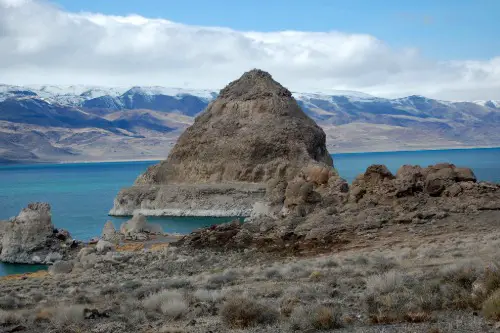
Pyramid Lake is striking, especially with its iconic tufa formations rising from the water. It’s a sacred site for the Paiute Tribe and holds deep cultural significance. That alone is enough reason for many to refrain from swimming—it’s a place to be respected, not splashed around in. But there are also environmental reasons.
The water is alkaline and can be harsh on skin and eyes. There are no fish except the native cui-ui and Lahontan cutthroat trout, both protected species. Recreational swimming isn’t illegal, but it’s definitely discouraged. Visitors come for the peace and the view, not the cannonballs.
14. Lake Okeechobee, Florida
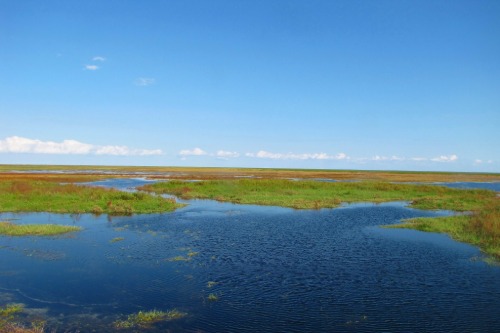
This massive lake is a vital part of Florida’s water system, but it’s not exactly a swimming hotspot. It’s shallow, murky, and often full of algae. More importantly, it’s known for its high concentration of alligators and even the occasional python. Not exactly the best company for a swim.
The lake’s pollution issues have led to health advisories and closures in recent years. Plus, the mucky bottom makes wading unpleasant at best. Fishing is huge here, but you’ll rarely see someone just casually swimming. Most locals wouldn’t dream of it.
15. Blue Lake, Oregon
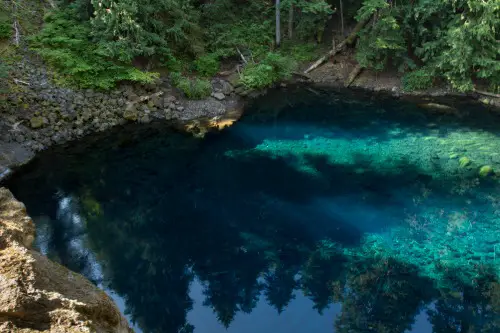
Blue Lake, near Portland, is surrounded by parks and looks like a perfect family outing spot. But the lake has a long-standing problem with toxic algae blooms. Despite cleanup efforts, the water still often tests unsafe for swimming. The irony is—it’s called “Blue Lake,” but that color isn’t always a good sign.
The algae can cause everything from rashes to serious illness in pets and children. Warning signs go up every summer, but visitors still get tempted by the inviting water. Most locals have learned the hard way to stay out. It’s a cautionary tale in a pretty package.


